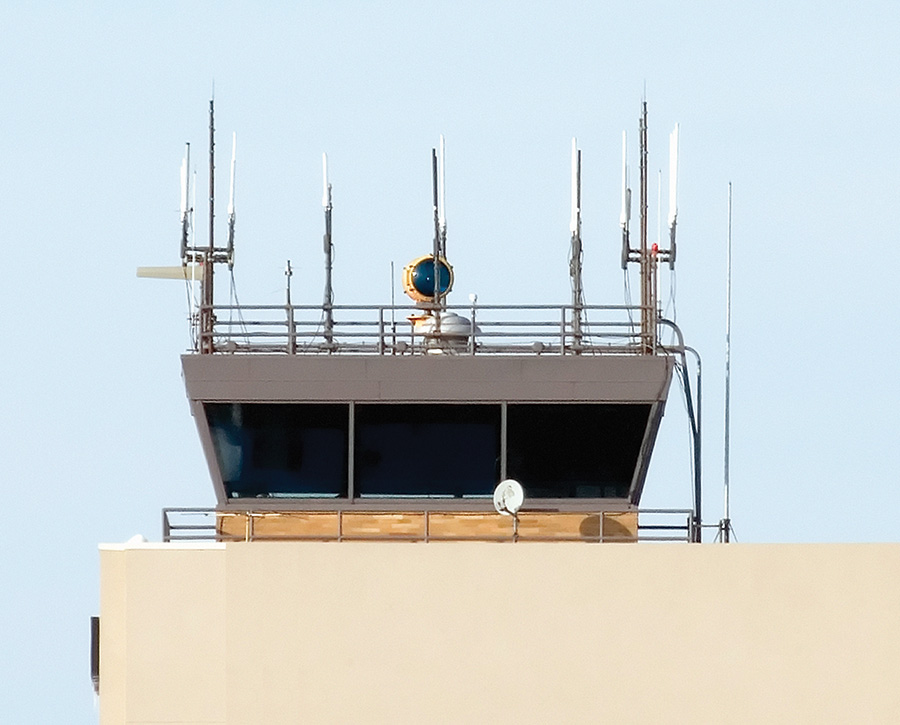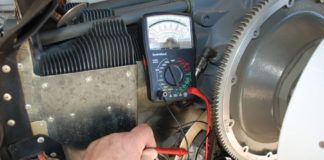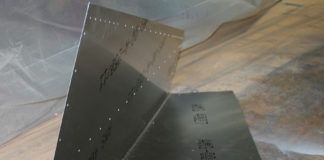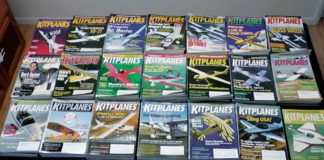When I was a young student pilot, I hated the idea of talking on the radio. Granted, this may have been partly because the “portable” radio we had available for the J-3 Cub was about half the size of a briefcase and the batteries were never charged. That, plus the fact that you couldn’t hear the speaker with all the racket of the mighty C-65 doing its thing, and the handheld microphone was always getting caught under the seat. It was all enough to just make us fly on weekdays, when the tower wasn’t open. It gave me a phobia about radio use that lasted for several years-but eventually, I got over it, and have been chatting away on headsets now for close to four decades. What I have learned is that communication via radio really isn’t all that bad, so long as you understand a few basic rules. Those rules are pretty much universal across the aviation community, but there are just a couple of things special when it comes to flying Experimental aircraft that are worth reviewing.
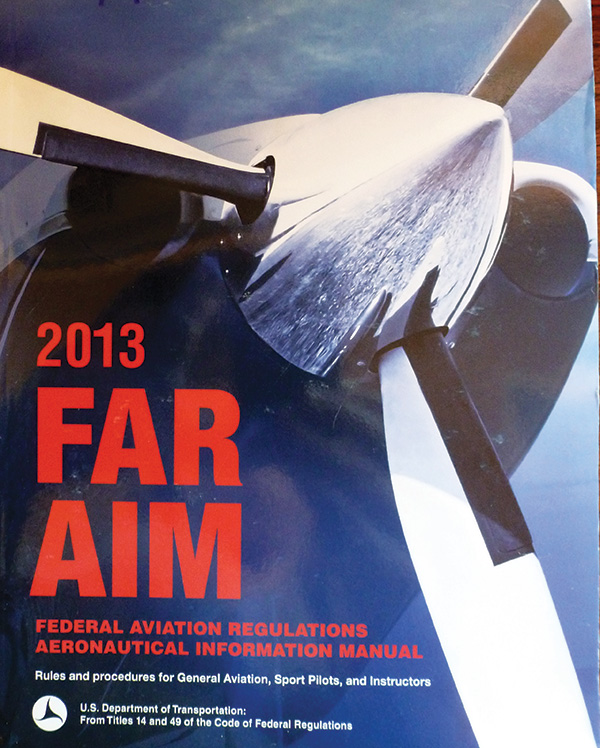
Listen to the Unicom at any busy GA field on a nice weekend day, and you will often think that no two radio calls are ever the same. Pilots have different ways of interpreting the instructions given in the Airman’s Information Manual-almost to the point where you’d think that their goal is to not obey the simple rules. We hear all sorts of calls regarding reporting points, pattern locations, and intentions. The identification people use for their own airplanes might make one think that they are deliberately trying to hide who they are and what they are flying. Even when people are technically “loud and clear,” trying to guess where they are, and what they intend to do next, from some of the calls is a fruitless exercise.

Back to Basics
The basic idea of aviation radio work in the airport traffic area is to let others know where you are, where you are going, and what you are going to do when you get there. This is true of both uncontrolled and controlled fields, although at controlled fields, you are also looking for instructions (a clearance) from the tower controllers whose job it is to keep order and pilots from bending metal. Part of the process of letting folks know where you are and what you are going to be doing is letting them know what you are flying-because that will hopefully tell everyone how fast you are going to be going, and how big your turns might be.
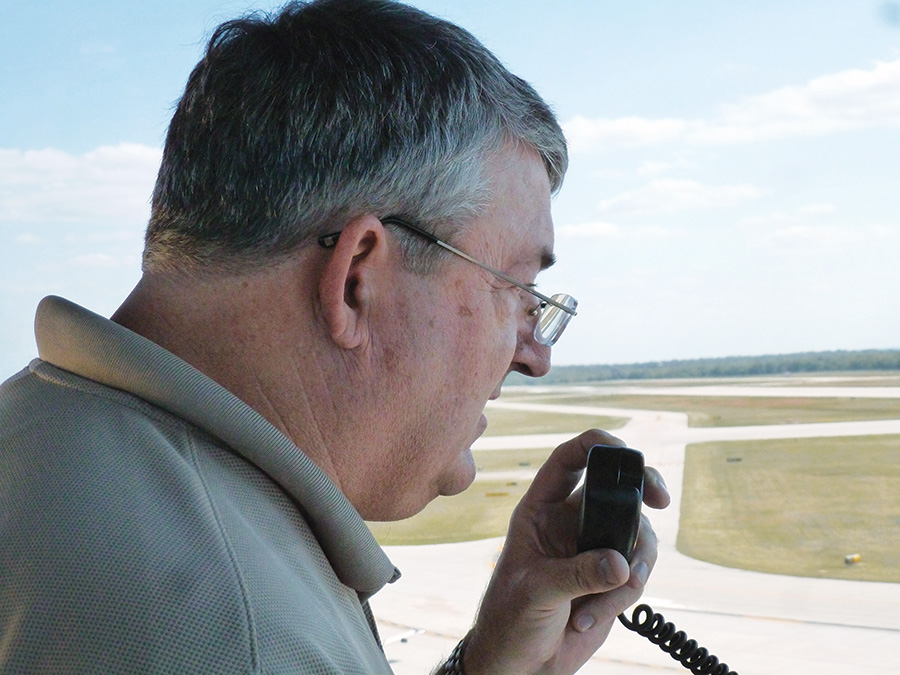
Now, anyone who has read the operating limitations for their Experimental aircraft probably remembers that there is something in there about identifying yourself as Experimental when talking on the radio. But, it seems that many haven’t gone back and read them in a long time. If your ops lims were written anytime recently, the text basically says that you “must identify the Experimental nature of the aircraft upon initial contact with an air traffic control tower (emphasis mine). That’s it-that is the only mention of Experimental and radio work you will find. Because the FAA loves to hold pilots to the exact wording of the regulations, this means that you have no obligation to tell a center or approach controller that you are Experimental. It also means that you don’t need to call yourself Experimental in subsequent calls to a tower-or at all when talking on a CTAF frequency at an uncontrolled field. There is nothing illegal, or even immoral, about doing so. But let’s go back to the basics of communication and see when the use of the term “Experimental” is useful-or when it is superfluous.
Clear and Concise
Let’s take a typical CTAF Call. “Podunk traffic, Experimental Five Romeo Papa is 10 miles west, descending out of 3,000 feet, inbound for the downwind to Runway 33.” That is a nice, succinct call, and adheres to the examples given to us in the AIM. But…does it tell others as much as they would like to know? “Podunk traffic, Breezy Five Romeo Papa is 10 miles west, descending out of 3,000 feet, inbound for the downwind to Runway 33.” Ahhh…it’s a Breezy! Well, heck, we’ve got time to recover the entire Eighth Air Force in the time it will take for that guy to get here to the downwind. That call told us more than just using the term “Experimental.”

In fact, oftentimes, if it makes a difference due to the traffic, someone might have to pipe up and say, “And what kind of Experimental are you Five Romeo Papa?” Then the pilot would have to answer back that he’s a Breezy. Now in many places around the country with little traffic, making two extra radio calls is simply called being neighborly-but in a busy metropolitan area, with multiple uncontrolled fields sharing the same CTAF frequency, every call is part of the clutter-and the resultant blocked calls and squeals help no one.
I have made my living talking on headsets in cockpits and on consoles. When we grade people’s communication skills, the highest praise you can give them is “clear and concise.” Their message is understandable and they transmit it with the fewest number of words. Cramming those words into the shortest amount of time can work against the “clear” part of that goal-but don’t tell the controllers on the East Coast that! You don’t have to talk fast to make calls short-you can also do it by only using the words that contain meaningful information.
The Lure of “Experimental”
Now I know we all have done it-I sure have. There is a serious cool factor to calling yourself “Experimental” on the radio-I won’t deny it. I did it for a long time after my first Experimental was new, until I realized I wasn’t helping anyone with the word. Yes, there are absolutely good reasons to use the prefix-at times. If you’re flying a new design, something that no one has ever heard of before, calling yourself a “Whiz-Bang 300” doesn’t do anyone much good. Is that Whiz-Bang going to be coming into the pattern at 200 knots-or is it really just an ultralight with an identity complex imposed by its designer that could get run over by a Cub? We don’t really know-and in that case, since nobody knows what a Whiz-Bang is, you can be justified in calling it an Experimental. In fact, maybe using “Fast Experimental” or “Slow Experimental” would help out the other guys in the pattern.
But hey, if you’re flying an RV…well, heck, there are more RVs flying around than all the certified Grumman singles (AA1-AA5) ever built, and most people know what to expect if you call yourself a Grumman, or a Tiger, or a Yankee. There are very few who won’t know what an RV is these days. Or a Glasair, or Lancair, or Sportsman, or Pitts-yeah, even that Breezy! But most pilots are just savvy enough to get the picture. Heck, we don’t have to confine this discussion to Experimentals. Have you ever heard Citation pilots call themselves a Cessna? I have-but not often, and it certainly confuses things. I’d rather a Cub driver call themselves a Cub instead of a Piper because there is a difference in pattern speed between most Cherokee derivatives and a Cub. How about when you hear “North American” as an identifier? Is that a Mustang, a T-6, or a B-25? They represent a pretty big spread in speed and maneuvering capability, and I’m going to give each one a different amount of spacing-so I’d rather the pilot say “T-6” or “Mustang”-or “B-25.” That gives me a lot better picture of what’s out there.
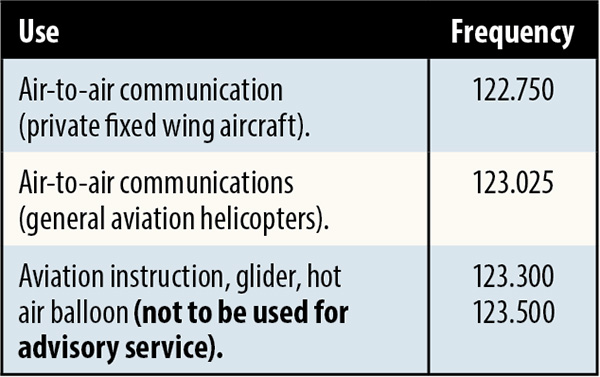
So back to “Experimental.” In most cases, it is ambiguous at best, creating more confusion than enlightenment. It does sound cool-but that isn’t what the radio is for. It’s about transmitting useful information. One good key to telling if people know your type of airplane is to check the list of approved aircraft types in FAA Order JO 7340.2A Contractions, Chapter 5 (Google it for the latest version). If your type is listed there, it is a good bet that it is well enough known that it will help other pilots more than just saying “Experimental.”
Unusual Operations
Calling yourself an Experimental does have roots in transmitting useful information, of course. By so doing, we used to tell folks, “Watch out! We’re not exactly sure what is going to happen!” And you can still transmit that as a warning today-although so many people use the call sign “Experimental” for their routine operations that it hardly means anything anymore. But it is nice to let people know that you might be asking for priority in the case of the unexpected, or an emergency. In that case, how about saying “Podunk traffic, Glasair Three Five Papa rolling for takeoff-first flight of the aircraft.” That will get people’s attention for sure! Those on the ground might even stop what they are doing and take the time to watch your triumph.
One of the reasons we are required to advise a control tower of our Experimental nature is so they can provide extra space and be prepared for a potential emergency or unexpected operation. It goes back to the days when there weren’t very many Experimental aircraft; they were unusual, and often needed unusual handling. There is still a valid reason to do so when dealing with a truly new type of aircraft-less so when you are flying the thousandth hour in your RV or Lancair Legacy.
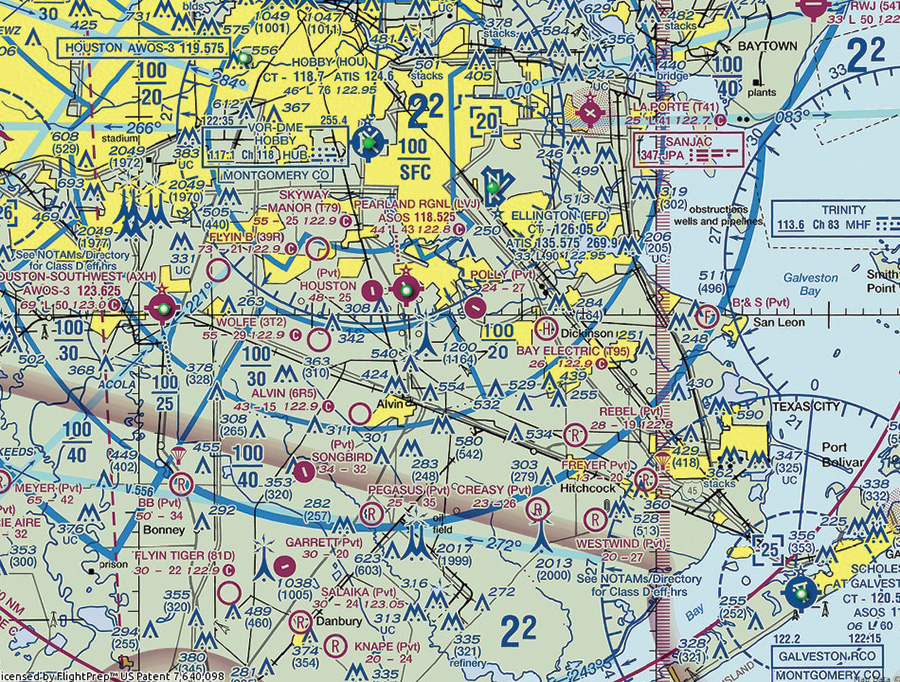
Call Signs and SOPs
The AIM is very clear in its examples of what it considers to be good radio technique. Now there are always the guys quick to point out that the AIM is not regulatory-it is advisory, unlike the FARs. They like to point this out so they can justify why they don’t use the procedures recommended in the AIM. But the truth is, if you cause a problem that is brought to the notice of an FAA inspector, and you’re not flying in accordance with the AIM, you will quickly find out about the catch-all “Careless and Reckless” clause in the FARs. Don’t believe me? There are many, many fine examples of 90- or 180-day suspensions in pilots’ records to prove it. That won’t help your insurance rates, by the way.
For better or worse, the AIM lists a number of suggested phraseologies we should use when working around uncontrolled fields. These generally include your call sign, your position, and your intentions. Now we can argue until we are blue in the face about the value of call signs on the radio. Radio guys consider pilots to be guests on the electromagnetic spectrum, and they want us to use their rules in their house, which includes the use of real call signs. Do we really care if the guy opposite us in the pattern is flying “RV 1234 Victor,” or if he is flying a “yellow RV”? Probably not. I use call signs to build a picture in my head as to what is in the pattern, the airplanes’ relative speeds, and what I expect them to do. Many argue that giving their color and type is more informative. I personally find that if the airplane is close enough for me to tell the color difference between green and blue, I am too close to begin with. Most airplanes in a haze just look like dark dots.
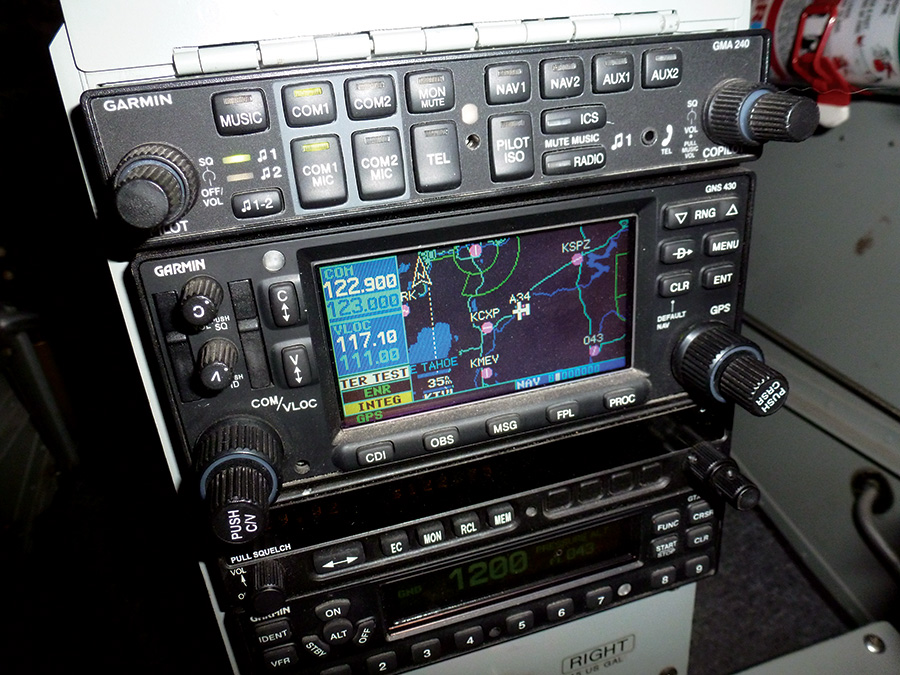
I operate in and out of both controlled and uncontrolled environments, and the simplest thing to do is to use the same procedures (call sign) everywhere. I don’t have to remember what to use at a given airport-I just use the call sign, and there is no confusion.
The only reason we use procedures is to put everyone on the same page and make sure that we can predict the actions of others. Many times, the procedures themselves are arbitrary. We might feel that we have a better procedure. But if everyone does what they want, then we’ve thrown the book out the window and we have a free-for-all. The AIM says to use call signs, and in my mind, as long as I have a unique “tag” to keep the picture in my head of who is in the vicinity, I don’t care. I will admit to using color and type on occasion-but that’s usually in cases where I find myself in a strange airplane and no one bothered to put the call sign on the panel. It is embarrassing to key the mike in a plane when you are strapped in and running, and suddenly realize you have no idea what to call yourself. You then revert to “blue and white RV” or “little yellow RV” out of sheer desperation. No harm, no foul-unless, of course, you’re at a towered airport.
“Where is He?”
Although not unique to Experimentals, accurate position reporting is critical to radio communications. It is far worse to inaccurately report your position than to not report it at all, in my book. If I hear no one on the radio, I am looking everywhere for traffic. If I hear someone report a position, I look in that direction to try and find them. If they have misreported their position, I then am concentrating my effort in the wrong place and giving up some of my scan toward where they might really be. There are two types of erroneous reports that I have found particularly misleading-the ones that confuse direction, and the ones that use local landmarks.
It is wonderful to live in a world of rectilinear grids. The central U.S. is crisscrossed by section lines running in the cardinal directions. This is fantastic for position reporting-north, south, east and west are drawn right on the face of the planet, and it is hard to confuse things. But there are parts of the world where this isn’t true-and some places where it is really misleading. I spent over 30 years flying in the Houston/Galveston (TX) region. The two cities are connected by Interstate 45, and everyone knows that Galveston is “south” of Houston. Therefore, Houston is “north,” and Galveston is “south.” Cross streets run at right angles to the highway, enhancing the look of a giant compass grid. The problem is, the interstate actually runs northwest/southeast. The prevailing winds are such that many runways line up with the highway as well. So when people are on approach to, say, Runway 31, they tend to think of themselves as south of the field-but they are really southeast.
Calling yourself “to the south” when you are actually to the southeast might not bother local pilots (who often make the same mistake), but what about the transients who only have their compass, a map, and no knowledge of the local colloquialisms? They are now looking for you in the wrong place. You might as well have not made the call.
Equally troubling is “over the gravel pit.” Well, unless the gravel pit is listed on the charts as a reporting point, that doesn’t really help the guys from elsewhere, does it? We used to have two high schools, equally distant from our airport, and exactly on opposite sides. People would call “over the high school,” which means no one had a clue where they were. Nothing but a waste of good radio waves in that call.
Sometimes, it takes no effort at all to decipher a local call, of course. “Crossing the coastline due south of the field” is pretty clear. “Over the smoke plume” is one that works if there is a big power plant or industrial site putting out a mass of vapor. But “over Rawe Peak” doesn’t help anyone but the locals if it isn’t listed that way on the chart. The simple solution? Pretend you know nothing of the area and analyze your calls-do they make sense to someone from the other side of the country who has never been at your airport before?
The reason for the standard procedures in the AIM is that they work anytime, anywhere-for everyone. That is why they were developed, and that is why they should be followed.
What’s He Going to Do Next?
The second reason we make radio calls in the area of uncontrolled fields is to tell people what we are going to do. Telling everyone where you are is good-but we need to know where you’re going as well. “Ten miles south of the field, inbound to enter the downwind for Runway One Seven” is great. Once you get in close and are in the pattern, how about letting everyone in on your plans? Are you making a full stop? Touch and go? Stop and go? Stop and back taxi? If I am following you in the pattern, I may give you different spacing for each of these cases, so it helps to know what you’re going to do. A good call is “RV Three Papa Lima, entering downwind for Two Three for a touch and go.” Now we know where you are and what you’re going to be doing. Sometimes we change our minds on a full stop versus a touch and go. OK-tell folks you’ve changed your mind. Or if you just don’t know, then tell folks you’re turning final “for the option.” Personally, I think pilots should make plans a little farther out than when they are touching down, but sometimes an instructor just wants to keep the student guessing.
“What’s the Frequency, Kenneth?”
We all know how to find the appropriate frequencies for CTAF at an uncontrolled field-just look at the chart (or, more commonly, your EFIS or favorite charting program on your tablet). The same is true for tower frequencies at big airports. Things like Flight Watch and FSS frequencies all can be looked up in appropriate, official documents. But as more and more Experimental aircraft find themselves going to pancake breakfasts, fly-ins, and on poker runs, more and more we like to chat with one another on the way. I have found a wide number of people using a wide variety of air-to-air frequencies around the country, and when I ask why they use that frequency, the answer is usually that someone else told them to use it. The truth is, most are poaching on frequencies that are actually reserved for other uses. Many pilots like to use “Beachball”-123.45-which is actually reserved for air-to-air communications for transoceanic flight, but it can be used by other facilities when over a continent, so it is not necessarily “open.”
There are some frequencies reserved for the use of airshows or limited commercial operations. It is not uncommon for pilots to use those frequencies when not participating in the airshows because they learn that they are “reserved,” but not in use all the time. But some commercial operations are given frequencies to use based on their operating manuals and, while they are not using them all the time, they expect them to be reserved for those operations. With many modern radios boasting automatic squelch and powerful transmitters (I have heard Garmin 430s transmitting clearly from 300 miles away), we might not realize that we are clobbering someone else’s operation. For example, a dusting operation might be using handhelds to communicate, and they are getting clobbered by a bunch of guys on their way to breakfast-and the breakfast-run guys don’t even know it. The best way for us to keep from stepping on anyone’s toes is stick with the frequencies reserved for air-to-air by the FCC and the AIM.
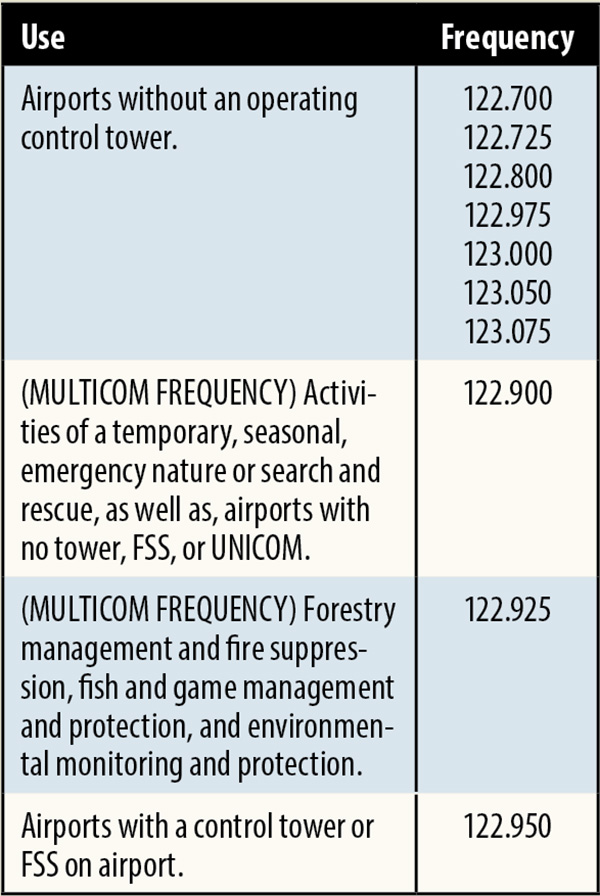
If we look in the AIM (Section 4-1-11), it actually defines frequencies for air-to-air use (right). I am aware that really only gives us one frequency to use. But just like any rules, if we don’t like them, we should work to get them changed-not just take it upon ourselves to violate them at our whim.

